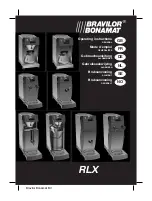
External Signal Exchange
90/121
Operating Manual dryve D1, ST-, DC-, EC/BLDC-Motor Control System - V2.4
6.4.13 Cyclic Synchronous Position Mode
The Cyclic Synchronous Position Mode (CSP) is used to implement motion control by specifying many individual position points.
This mode is particularly suitable for circular movements or for a synchronization of several axes.
Accelerations and velocities are generated internally according to the next Target Position command.
The trajectory must be generated in a higher-level control system.
To use this mode, the value 8 must be set in object
6060h "Modes of Operation"
Execution of movements
Requirements:
•
CANopen communication set active
(P. 53)
•
CANopen communication set dominant
(P. 61)
•
Chapter
Necessary User Interface Settings
(p. 84)
•
Digital Input DI 7 „Enable“ set high
•
Pass through the „State Machine“ till „Operation Enabled“
•
Execution of a reference movement (Homing)
The following objects must be parameterized
Object
Name
Description
6060h
Modes of Operation
Mode selection
– Target value: 8
Feed_constant_Feed
Shaft federate
Feed_constant_Shaft_revolutions
Shaft revolutions l
Target Position
Indication of the New Target Speed
Interpolation Time Period
Minimum cycle time for adopting new position set points
If the value in object 6060h "Modes of Operation" was set to 8, the CSP mode is directly active. If values are now written into
object 607Ah "Target Position", position changes are executed directly
Note
If a fault shutdown during a traversing movement had to be executed, e.g. E11 Following Error (P. 112) and the movement
shall be restarted again, a new trajectory generation must be created from the current position.
If a too large Actual Position to Target Position deviation is being used for restarting the movement (e.g. destination or initial
starting position), a new following error can immediately arise.
The object 6064h "Position Actual Value" can be used to display and evaluate the current position or the object 606Ch "Velocity
Actual Value" for the current speed.
6.4.14 Error
If the dryve D1 detects an error, Bit 3 in the Statusword is set. A more exact error analysis is possible via the user interface.
Descriptions of all errors and how to correct them are provided on the interface.
You can acknowledge an error by setting the Controlword Bit 7, by using the acknowledgement button on the user interface or
by setting DI 10
“Reset” to logical 1.
















































